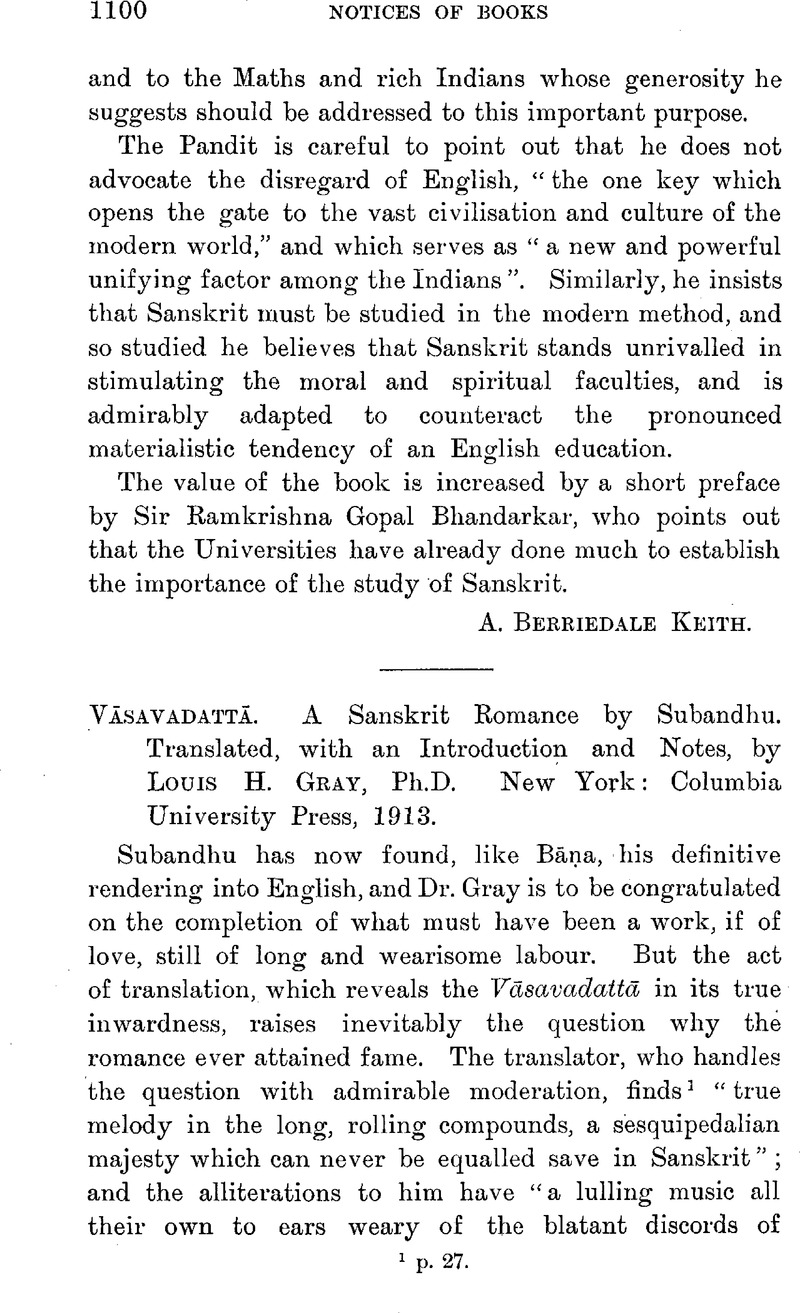No CrossRef data available.
Published online by Cambridge University Press: 15 March 2011

page 1100 note 1 p. 27.
page 1101 note 1 pp. 33, 34.
page 1101 note 2 Compare the antitheses of Gorgias in the Helen and his fondness for verbal jingles.
page 1102 note 1 pp. 8–11.
page 1102 note 2 This date he accepts from Kern, Manual of Indian Buddhism, p. 129Google Scholar; Müller, Max, Six Systems, p. 477Google Scholar. But the date is probably too late. Cf. p. 1091.
page 1102 note 3 p. 78, n. 7, agreeing with Krishnamachariar in his Introd. pp. 36–8.
page 1102 note 4 JRAS. 1909, pp. 138 seq.Google Scholar
page 1103 note 1 Accepted by Jacobi, , JAOS. xxxi, 2 seq.Google Scholar
page 1103 note 2 JRAS. 1914, pp. 603–7.Google Scholar
page 1103 note 3 Medieval School of Indian Logic, p. 105.Google Scholar
page 1103 note 4 Kādambarī 2, pp. 101–4Google Scholar; so Weber, , SBA. xxxvii, 917.Google Scholar
page 1104 note 1 The cases of homoioteleuta, alliteration, parisosis, and strained compounds referred to by Gray, , p. 36Google Scholar, are wholly incomparable with the Sanskrit uses; the Greek authors have a few instances as special ornaments; the Sanskrit essentially depends on them.
page 1104 note 2 Rohde, , Griechischer Roman 2, p. 593Google Scholar; see Gray, , p. 96, n. 14.Google Scholar
page 1104 note 3 JAOS. xvi, pp. clxxii–iii.Google Scholar
page 1104 note 4 KZ. xlv, 134–5.Google Scholar